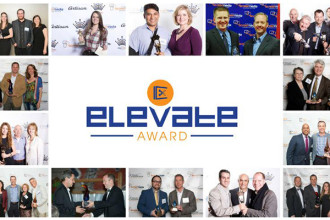A New Perspective on ADA: Empathy Rather than Compliance
The following is reprinted with permission from the Digital Screenmedia Association (DSA). For more information, go to http://www.digitalscreenmedia.org.
 After hearing reports that Whistler got four feet of snow in March, my son and I changed our Spring Break plans and headed for the slopes. After five days of amazing skiing — SNAP! — I hit a mogul wrong and ripped my ACL (in lieu of flowers, send chocolate). For the trip home, I was in a wheelchair, ferried by a 13-year old through the airport.
After hearing reports that Whistler got four feet of snow in March, my son and I changed our Spring Break plans and headed for the slopes. After five days of amazing skiing — SNAP! — I hit a mogul wrong and ripped my ACL (in lieu of flowers, send chocolate). For the trip home, I was in a wheelchair, ferried by a 13-year old through the airport.
When creating customer experiences, I emphasize the importance of empathy work. I use the Design Thinking methodology religiously which emphasizes research, observation and ‘putting yourself in your customer’s shoes.’
Therefore, I thought I understood what it meant to go out and observe how customers truly behave. However, this skiing accident gave me a new perspective on ADA compliance and consideration of those with disabilities.
When I’m not in the wheelchair, I love the self check-in kiosk at the airport. I figure that I travel 100,000 miles a year which means I’m gone at least once a week. On average the kiosk saves me 10 minutes in line. That means that kiosk saves me 1,040 minutes per year or roughly 17 hours (translated to mean the entire season of Game of Thrones plus Downton Abbey).
However, when I was in the wheelchair my perspective changed drastically. They were still my same beloved kiosks. However, now I realized how critical placement was. They were angled in a way that made me hard to get at them through the alley that the bank of kiosks created. There was a cordon ropes leading up to the kiosk banks that made it hard for me to maneuver to them. I had trouble reading the screen when I had to get close enough to it to swipe my passport and frequent flyer card. From that vantage point, the kiosk now looked imposing rather than friendly.
After we got through security (which is a whole separate blog post!), I went to get my son something to eat. Again, I encountered the same convoluted customer flow. I had to wheel through the tables and chairs to get to the ordering line. Even though the payment pad was at ADA height, it was flat on the counter, rather than angled. That meant that I could see none of the numbers for my total on display. All I could do was enter my pin and pray my total was accurate.
Many of us who work in crafting customer experiences take a great deal of time and effort to ensure that we are ADA compliant. At Mzero we do extensive testing and always check to ensure we’ve met the standards. However, do we really think about what the experience for these people is — rather than seeing them as a list of specs?
I know that given my recent experience, I will start spending time in the wheelchair when evaluating prototypes. I will also create a set of placement and installation guidelines for the customer. I will ensure that the experience is as visually appealing from that vantage point. Furthermore, I will encourage the executives with whom I work to also do empathy work after the units are in the field. All it takes is someone to create a cordoned queue in front of the kiosk to suddenly alter what is otherwise an elegant experience. I also vow that my son shall never drive me anywhere if his wheelchair steering is any indication of his future driving ability.





